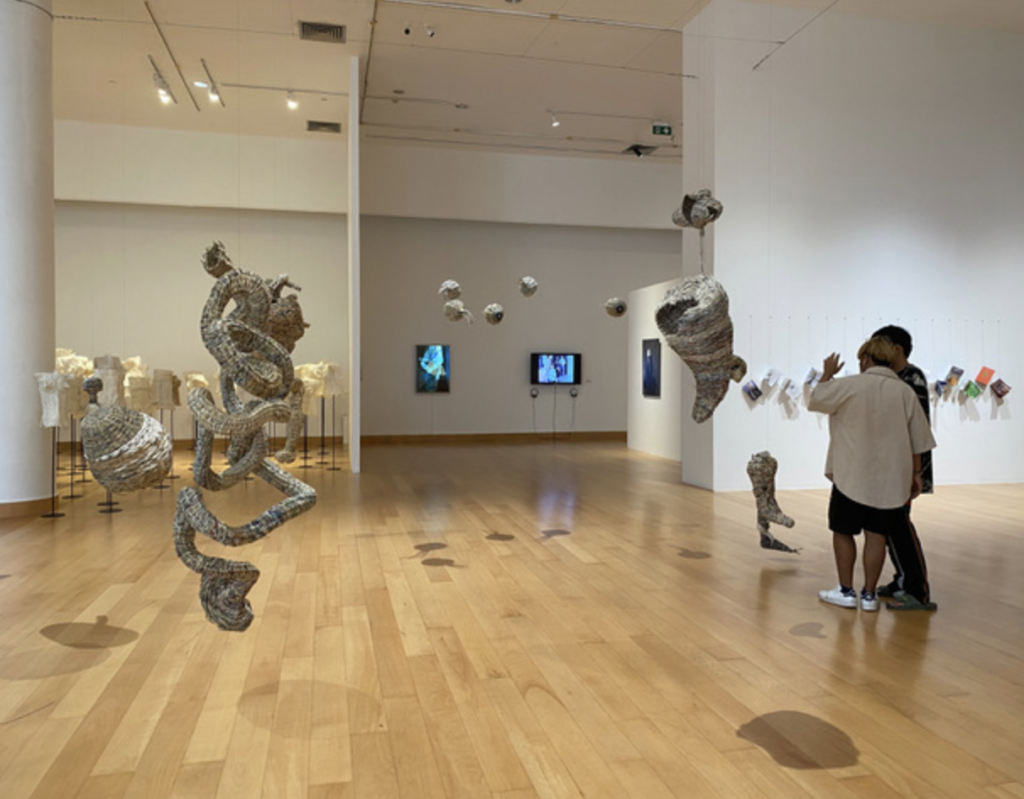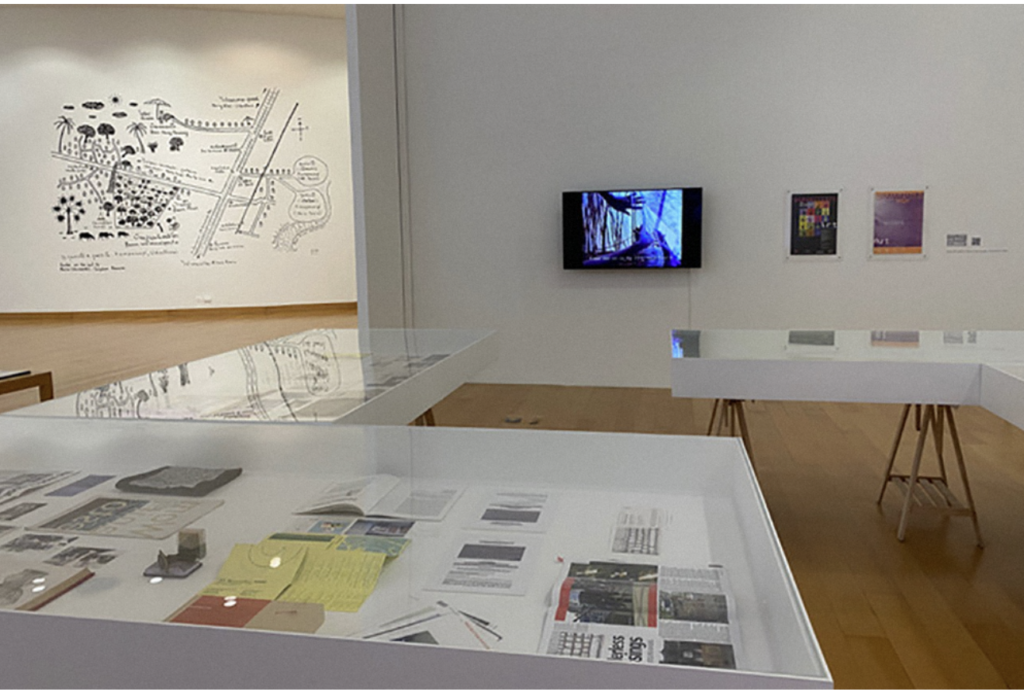Recently, I revisited the historical activities of Womanifesto, a female art organisation in Thailand, particularly the retrospective exhibition “Archiving Womanifesto: An International Art Exchange, 1990s–Present” held by the Asian Art Archive (AAA) in Hong Kong in 2020. These materials have given me great inspiration and redefined my understanding of “time”, “flow”, and “feminist art practice”.
The Sensualisation of Time Politics
In the Flowing Connections exhibition, Womanifesto did not use the traditional linear time narrative to organise past exhibitions or archives. Instead, they exhibited them in a “jump-fragment” manner, with projects from different years and of different types intertwined. This made me reflect: “flow” is not only physical movement, but also narrative rupture and reconnection. Could I set up an “out of chronological” archive display on the third floor (Public Time Co-Creation Area) to allow different generations and female voices to appear intertwined, simulating the real female experience of time–fragmented, non-linear, yet with emotional flow?

Womanifesto: Flowing Connections Exhibition View
Flowing Connections is not a “completed review“, but positions itself as an unfinished and open action. This concept coincides with my original idea. In my third-floor space, I will not only allow the audience to view the archives, but also invite them to “supplement the archives“. For example, write down moments when they have been deprived of or have regained time on the Future Time Wall, or upload small clips to the Women’s Time Archive online platform, allowing the exhibition to continue growing.

Archive Room
Womanifesto’s Flowing Connections reminds us: archives and exhibitions are not simply to calmly record the past, but to continue to initiate actions – letting fragmented time converge into a new river of resistance.
Resource:
Womanifesto: Flowing Connections:https://www.womanifesto.com/events/flowing-connections/


Leave a Reply